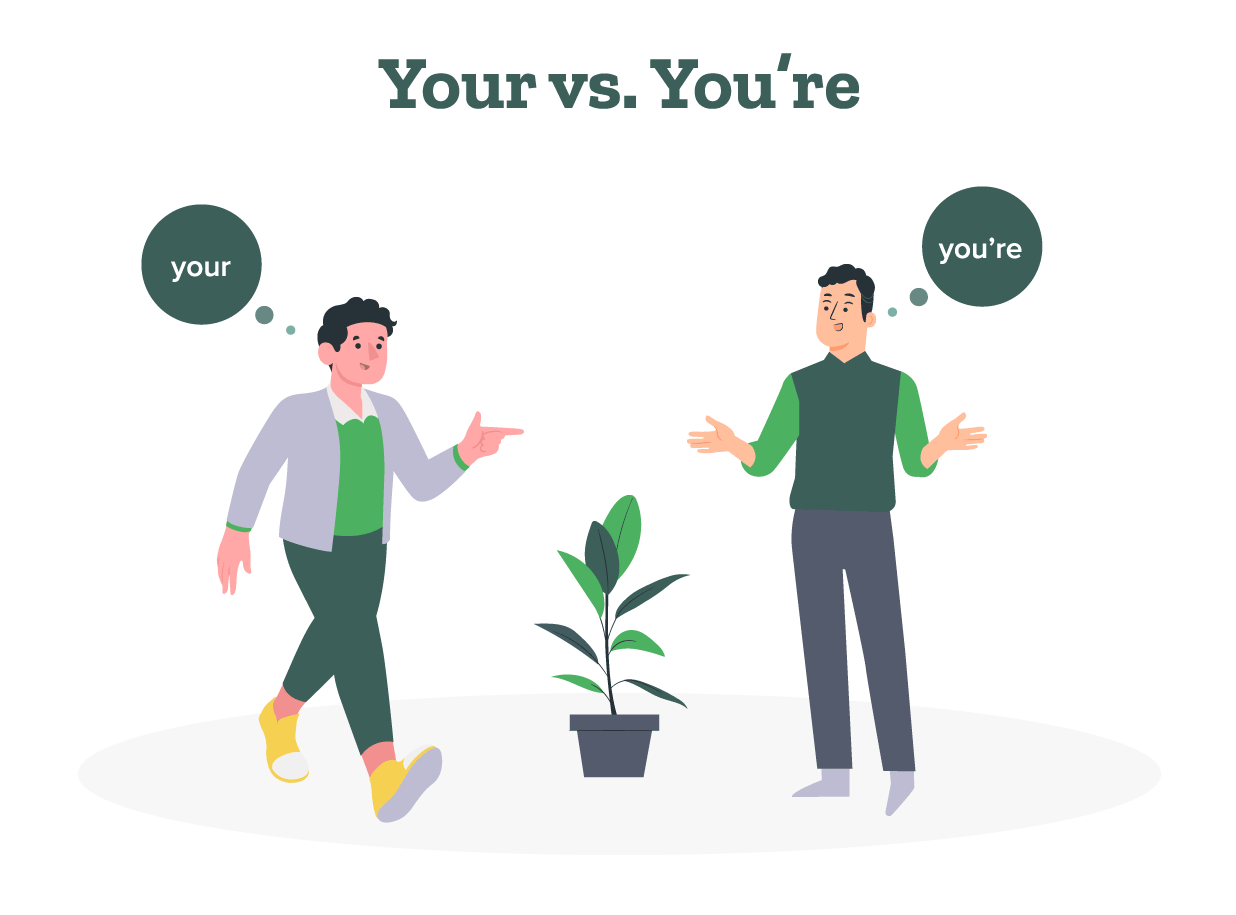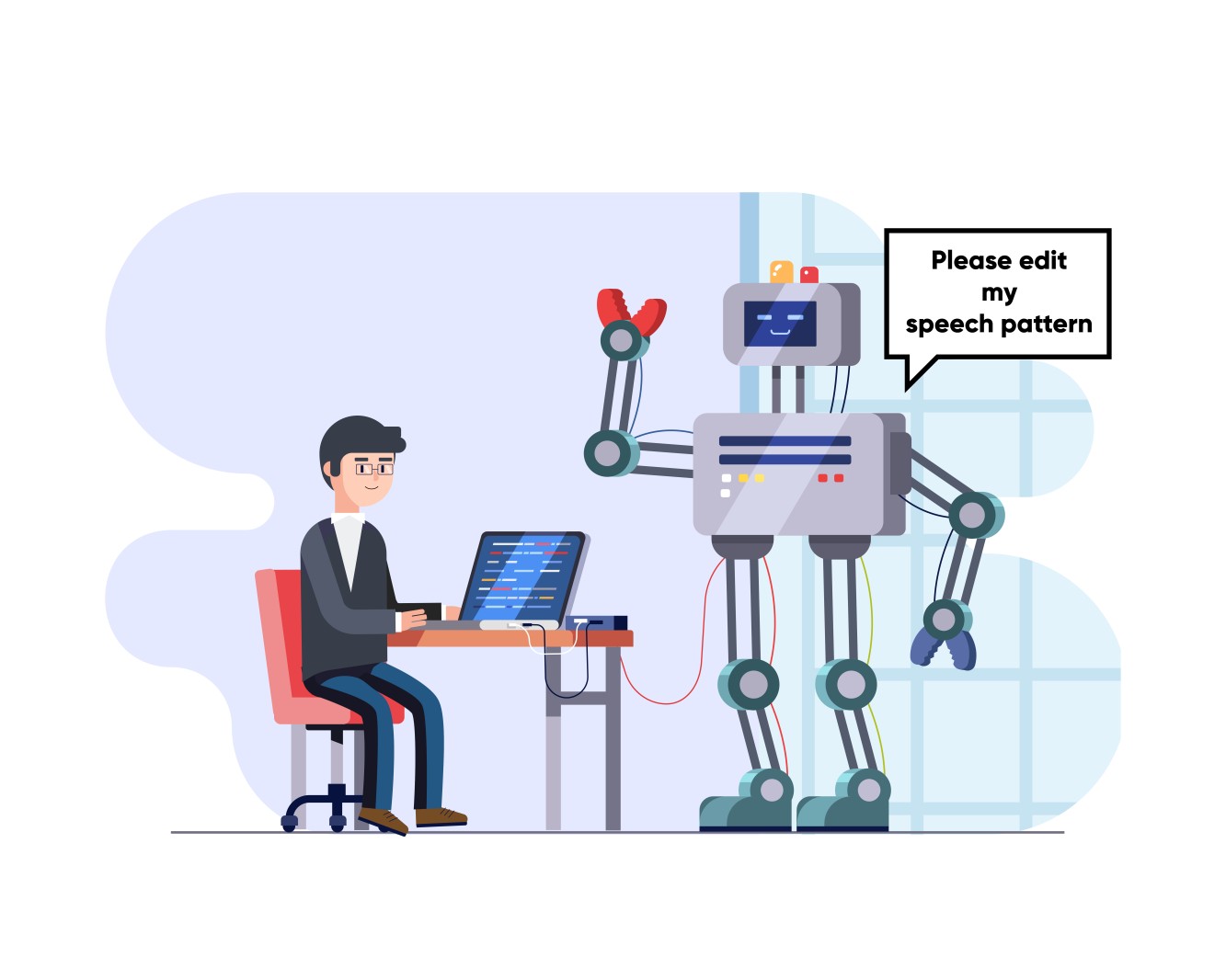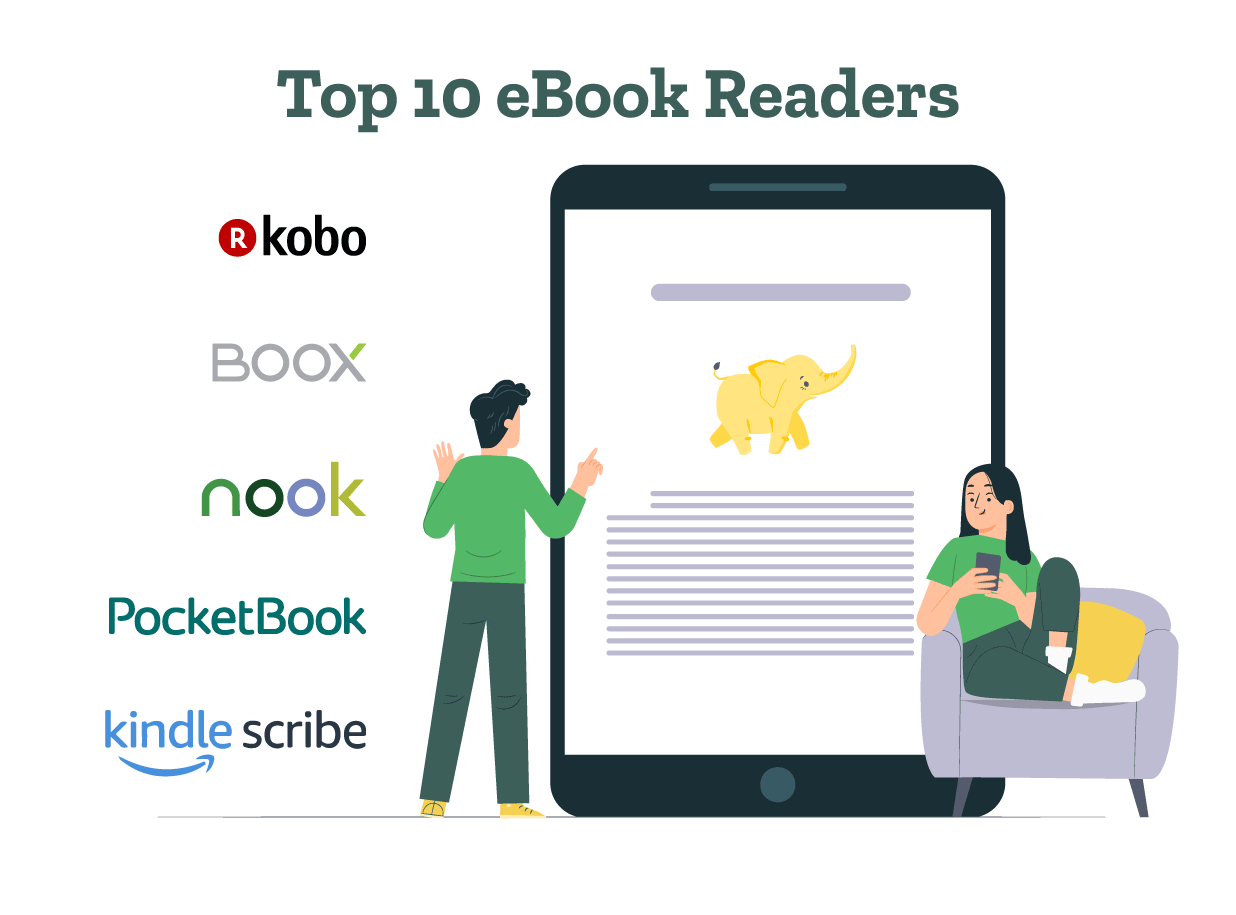- A List of Writing Contests in 2022 | Exciting Prizes!
- Em Dash vs. En Dash vs. Hyphen: When to Use Which
- Book Proofreading 101: The Beginner’s Guide
- Screenplay Editing: Importance, Cost, & Self-Editing Tips
- Screenplay Proofreading: Importance, Process, & Cost
- Script Proofreading: Rates, Process, & Proofreading Tips
- Manuscript Proofreading | Definition, Process & Standard Rates
- 14 Punctuation Marks: Examples & Free Guide on How to Use
- Tips to Write Better if English Is Your Second Language
- Novel Proofreading | Definition, Significance & Standard Rates
- The Top 10 Literary Devices: Definitions & Examples
- Top 101 Bone-Chilling Horror Writing Prompts
- Top 10 Must-Try Writing Prompt Generators in 2024
- 100+ Creative Writing Prompts for Masterful Storytelling
- Best 101 Greatest Fictional Characters of All Time
- Top 10 eBook Creator Tools in 2024: Free & Paid
- 50 Timeless and Unforgettable Book Covers of All Time
- What Is Flash Fiction? Definition, Examples & Types
- Discover the Best Book Review Sites of 2024: Top 10 Picks
- 80 Enchanting Christmas Writing Prompts for Your Next Story
- Your Guide to the Best eBook Readers in 2024
- Top 10 Book Review Clubs of 2024 to Share Literary Insights
- 2024’s Top 10 Self-Help Books for Better Living
- Writing Contests 2023: Cash Prizes, Free Entries, & More!
- Top 10 Book Writing Apps of 2024: Free & Paid!
- Top 10 Book Marketing Services of 2024: Features and Costs
- 10 Best Book Publishing Companies in 2024
- What Is a Book Teaser and How to Write It: Tips and Examples
- Audiobook vs. EBook vs. Paperback in 2024: (Pros & Cons)
- Top 10 Book Writing Software, Websites, and Tools in 2024
- How to Get a Literary Agent in 2024: The Complete Guide
- An Easy Guide to the Best Fonts & Font Sizes for Your Book
- Top 10 Book Promotion Services for 2024’s Authors
- Alpha Readers: Where to Find Them and Alpha vs. Beta Readers
- Author Branding 101: How to Build a Powerful Author Brand
- How to Write a Book Report | Steps, Examples & Free Template
- A Guide on How to Write a Book Synopsis: Steps and Examples
- How to Write a Book Review (Meaning, Tips & Examples)
- Writing Contests 2024: Cash Prizes & Free Entries
- Book Title Generators: Top 10 Book Name Generators of 2024
- 50 Top Literary Agents in the USA for Authors in 2024
- Building an Author Website: The Ultimate Guide with Examples
- Top 10 Book Printing Services for Authors in 2024
- 10 Best Free Online Grammar Checkers: Features and Ratings
- How to Write a Poem: Step-by-Step Guide to Writing Poetry
- What Is a Poem? Poetry Definition, Elements, & Examples
- 2024’s 10 Best Paraphrasing Tools for All (Free & Paid)
- Top 10 AI Detector Tools in 2024 (Free & Paid)
- Top 10 Book Editing Software in 2024 (Free & Paid)
- What Is an Adverb? Definition, Types, Differences & Examples
- What Are Large Language Models and How They Work: Explained!
- What Is an Adjective? Definition, Usage & Examples
- Top 10 Hardcover Book Printing Services [2024 Update]
- 15 Types of Poems Everyone Should Know About
- 2024’s Top 10 Setting Generators to Create Unique Settings
- Book Cover Design: An Introduction
- What is a Book Copyright Page?
- 8 Pre-Publishing Steps to Self-Publish Your Book
- 7 Essential Elements of a Book Cover Design
- How to Copyright Your Book in the US, UK, & India
- How to Format a Book in 2024: 7 Tips for Print & EBooks
- Beta Readers: Why You Should Know About Them in 2024
- How to Publish a Book in 2024: A Beginners’ Guide
- ISBN Guide 2024: What Is an ISBN and How to Get an ISBN
- Book Cover Design: An Introduction
- How to Hire a Book Editor in 5 Practical Steps
- Self-Publishing Options for Writers
- How to Promote Your Book Using a Goodreads Author Page
- 7 Essential Elements of a Book Cover Design
- What Makes Typesetting a Pre-Publishing Essential for Every Author?
- 4 Online Publishing Platforms To Boost Your Readership
- How to Find the Perfect Book Editor for Your Manuscript
- Typesetting: An Introduction
- Quick Guide to Novel Editing (with a Self-Editing Checklist)
- Quick Guide to Book Editing [Complete Process & Standard Rates]
- What Is Developmental Editing? A Self-Editing Checklist
- 10 Best Self-Publishing Companies of 2024: Price & Royalties
- What Is Amazon Self-Publishing? Pros, Cons & Key Insights
- Manuscript Editing in 2024: Elevating Your Writing for Success
- Self-Publishing vs. Traditional Publishing: 2024 Guide
- How to Publish a Book in 2024: A Beginners’ Guide
- ISBN Guide 2024: What Is an ISBN and How to Get an ISBN
- How to Publish a Book on Amazon: 8 Easy Steps [2024 Update]
- 10 Best Book Cover Design Services of 2024: Price & Ratings
- A Beginner’s Guide to Self-Publishing a Book in 2024
- Learn How Much Does It Cost to Self-Publish a Book in 2024
- What are Print-on-Demand Books? Cost and Process in 2024
- What Are the Standard Book Sizes for Publishing Your Book?
- Top 10 EBook Conversion Services for 2024’s Authors
- How to Copyright a Book in 2024 (Costs + Free Template)
- How to Market Your Book on Amazon to Maximize Sales in 2024
- Top 10 Hardcover Book Printing Services [2024 Update]
- How to start your own online publishing company?
- 8 Tips To Write Appealing Query Letters
- Self-Publishing vs. Traditional Publishing: 2024 Guide
- How to Publish a Book in 2024: A Beginners’ Guide
- ISBN Guide 2024: What Is an ISBN and How to Get an ISBN
- What are Print-on-Demand Books? Cost and Process in 2024
- 10 Best Book Publishing Companies in 2024
- How to Write a Query Letter (Examples + Free Template)
- How to Create Depth in Characters
- Starting Your Book With a Bang: Ways to Catch Readers’ Attention
- How to Write a Powerful Plot in 12 Steps
- Research for Fiction Writers: A Complete Guide
- Short stories: Do’s and don’ts
- How to Write Dialogue: 7 Rules, 5 Tips & 65 Examples
- How to Write a Novel in Past Tense? 3 Steps & Examples
- What Are Foil and Stock Characters? Easy Examples from Harry Potter
- How To Write Better Letters In Your Novel
- How to Write Unforgettable Antagonists
- On Being Tense About Tense: What Verb Tense To Write Your Novel In
- How To Create A Stellar Plot Outline
- How to Punctuate Dialogue in Fiction
- On Being Tense about Tense: Present Tense Narratives in Novels
- The Essential Guide to Worldbuilding [from Book Editors]
- What Is Point of View: 1st, 2nd & 3rd POV with Examples
- How to Create Powerful Conflict in Your Story | Useful Examples
- How to Write a Book: A Step-by-Step Guide
- How to Write a Short Story: 6 Steps & Examples
- How to Write Your Protagonist
- How To Craft a Murder Mystery Story
- Types of Characters in Fiction
- How to Write a Novel: 8 Steps to Help You Start Writing
- What Is a Stock Character? 150 Examples from 5 Genres
- How to Write a Children’s Book: An Easy Step-by-Step Guide
- Joseph Campbell’s Hero’s Journey: Worksheet & Examples
- Novel Outline: A Proven Blueprint [+ Free Template!]
- Character Development: 7-Step Guide for Writers
- Foil Character: Definition, History, & Examples
- What Is NaNoWriMo? Top 7 Tips to Ace the Writing Marathon
- What Is the Setting of a Story? Meaning + 7 Expert Tips
- Theme of a Story | Meaning, Common Themes & Examples
- 5 Elements of a Short Story & 6 Stages of a Plot
- What Is a Blurb? Meaning, Examples & 10 Expert Tips
- What Is Show, Don’t Tell? (Meaning, Examples & 6 Tips)
- How to Write a Book Summary: Example, Tips, & Bonus Section
- How to Write a Book Description (Examples + Free Template)
- 10 Best Free AI Resume Builders to Create the Perfect CV
- A Complete Guide on How to Use ChatGPT to Write a Resume
- 10 Best AI Writer Tools Every Writer Should Know About
- 15 Best ATS-Friendly ChatGPT Prompts for Resumes in 2024
- What Is an Adverb? Definition, Types, Differences & Examples
- How to Write a Book Title (15 Expert Tips + Examples)
- What Is an Adjective? Definition, Usage & Examples
- The 10 Best AI Story Generators: Features, Usage & Benefits
- Exploring Writing Styles: Meaning, Types, and Examples
- Mastering Professional Email Writing: Steps, Tips & Examples
- How to Write a Screenplay: Expert Tips, Steps, and Examples
- Business Proposal Guide: How to Write, Examples and Template
- Different Types of Resumes: Explained with Tips and Examples
Still have questions? Leave a comment

Checklist: Dissertation Proposal
Enter your email id to get the downloadable right in your inbox!
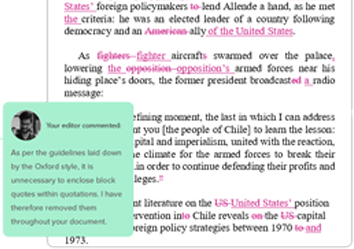
Examples: Edited Papers
Enter your email id to get the downloadable right in your inbox!
Need
Editing and
Proofreading Services?
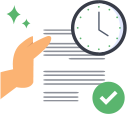
What Is Proofreading? A Comprehensive Guide
 Feb 17, 2023
Feb 17, 2023 7
min read
7
min read
Whether you’re writing a book, a college assignment, or a work-related email, proofreading a document is the crucial last step before you finalize it. It’s an important final check for anybody who engages in the writing process, be it a writer, a student, or a job applicant. Proofing a document ensures that your writing is not only error-free but also high-quality.
So, what is proofreading? Why does it matter? In this article, we’ll answer both of these questions and a few more! We’ll take you through the proofreading process, explain how it’s different from other types of editing, and offer a few examples of proofreading to ease the process.
Let’s start with the basics: What does proofreading mean?
What is proofreading?
Proofreading a document refers to the process of reviewing a finished document to mark any errors that obstruct the reading experience.
When we say “a finished document,” we mean an essay that is ready for submission, a resume that is ready to be sent, or a book that is ready to be published. Initially, a proofreader would work on the printed copy of a document—called a “proof”—and mark any errors in language or layout.
Obviously, book proofreading is wildly different from proofing an essay. An essay proofreader considers formatting guidelines, citation style, and factual accuracy. Proofreading a book has considerations of genre, story, style, mood, and consistency. Proofreading a resume will have yet other concerns.
The common denominator between all these is that proofreading a document is always the final step in its editing process. Today, online proofreading is the final check that removes all errors from your document before it reaches the reader.
The two most important things a proofreader looks for when proofreading your document are mechanical consistency and correctness.
What does mechanical consistency mean?
Well, there are basic rules that apply to the written form of any given language. Especially in formal documents like an essay or a job application, it becomes extremely important to observe these rules. Since they’re designed to prioritize clarity in writing, these rules benefit you by making your writing easy to follow.
Even for an informal, creative piece of writing like a short story or a poem, there are certain black-and-white rules that must be followed. Here’s a fun example of the difference that a comma can make:
1. Most of the time, travelers worry about their luggage.
2. Most of the time travelers worry about their luggage.
Unless you believe in time travel, you’ll notice what’s off about the second sentence.
If you ignore things like the right order of words, accurate punctuation, and standardized spelling, your writing becomes illegible. It’s this aspect of writing that proofreading seeks to correct. Proofreading a document does not change or rearrange its content, it merely ensures that the writing is error-free and easy to read.
So, a proofreader highlights errors in spelling, punctuation, grammar, and consistency in a text that has already been typeset.
Difference between editing and proofreading
Editing is a larger process in which proofreading a document features as the final step. Once different types of editing are performed on a document, it is proofread to remove all remaining errors and maximize its readability.
In the case of larger documents like a dissertation, a thesis, or a book, the editing process is longer. There are four distinct editing processes that focus on improving different aspects of your text:
- Developmental editing
- Copy editing
- Line editing
- Proofreading
Let’s go through these steps briefly and consider some examples of proofreading along the way.
- Developmental or substantive editing focuses on the big picture. It improves broader aspects like overall structure, organization, and quality of the written content.
- Copy editing looks at the document a little more closely. It scans your paragraphs for grammar mistakes, internal consistency, and stylistic uniformity. A copy editor improves the readability of your writing.
- Line editing is a line-by-line perusal of your writing, with a focus on tone and emotion in your writing. It’s quite close to copy editing, so most editors perform the two tasks together.
- Proofreading is performed after all other changes are made to the document. It removes all spelling, punctuation, and formatting errors, ensuring that your document is good to go.
If you’d like to read more about the different steps involved in editing, visit this article.
Having gone through these steps, it’s possible to wonder whether copy editing and proofreading are similar. After all, both of them focus on the mechanical aspects of your language use, right? So why are they different steps in the editing process?
Proofreading vs. copy editing
Different steps in editing modify the content and mechanical aspects of your writing. Copy editing, for example, suggests improvements in your word usage or sentence structure.
Proofreading does not do this. It suggests no changes to the content or language of your document and only points out incidental errors in your text.
There are three major differences between copy editing and proofreading.
| Copy editing | Proofreading |
|---|---|
| Examines paragraphs and sentences for clarity, consistency, grammar, and style. | Examines the entire document for spelling, punctuation, and formatting errors. |
| Suggests improvements to the writer and influences the final product to a significant degree. | Only removes incidental mistakes from the pre-edited text. It is the final check before the document is deemed ready to submit/publish. |
| The scope varies with each specific case, its context, and the client’s needs. | The scope is consistent no matter the document. |
We have seen what proofreading is and how it differs from other steps in book editing. Now, let’s take a look at why proofreading a document is so important.
Why should you proofread your document?
Online proofreading ensures that your document comes across as professional. When you dedicate the time and effort to get your text proofread by an expert, it shows that you take your topic and your writing seriously.
No matter how good your content is, errors in writing influence how people read your document.
Here’s an example that will make this very clear: Imagine you’re at a serene continental restaurant. There’s this pasta dish your friend has spoken of highly, and you’re trying to find it on the menu. And then you see it—the glaring typo—and all your friend’s praise suddenly fades from your head.
“Roasted Bell Peppre Arrabiata,” it says on the menu.
Such a silly typo from a highly recommended restaurant! You begin to doubt not only the quality of the restaurant but also your friend’s taste level!
The typing mistake totally distracts you from everything else on the menu. Even after you’ve placed your order, you can’t help thinking about the minute error.
When this happens with an academic essay, a book, or a business document, these errors can be harmful. They divert your reader’s attention from the topic at hand to some silly punctuation errors you could’ve easily avoided. Basically, it becomes difficult to take your document seriously.
What does a proofreader do?
A professional proofreader not only performs a grammar and spelling check but also goes beyond this to check your consistency and readability. It’s their job to point out anything that obstructs a good reading experience.
The proofreader finds and highlights the following errors in a document:
- Grammar mistakes: Problems with subject-verb agreement, consistency in tense, parallelisms, and so on.
- Spelling mistakes: Checking for British or American variations of spellings. For example: “favourite/favorite”
- Adherence to punctuation guidelines: Proper use of hyphens, dashes, the Oxford comma, etc.
- Adherence to style guidelines: Style of references list, in-text citations, footnotes, and annotations.
- Proper indexing: Ensuring that entries in your index match your topics and their respective page numbers.
- Perfect use of images: Checking image clarity, image alignment with text, and matching captions for all images.
- Functionality: Are the links functional? Does the digital copy read well? Is the font too big or too small?
- Layout: Ensuring that the layout is consistent throughout the book.
Proofreaders usually maintain style sheets for each of their clients. These sheets inform them of the language style that’s desirable in the document.
Academic papers necessarily adhere to a particular citation style. However, style sheets are also used in refining business reports, legal papers, or any document that has specific formatting guidelines.
What is a proofing mark?
Proofing marks, or proofreader’s marks, are the symbols used by proofreaders to mark errors in a printed copy.
As you know, the proofreader works with the proof, which is a ready-to-publish copy of any given document. Before digital documents were the norm, writers would print this proof and send it to the proofreader.
As the proofreader worked on this copy, they left symbols as instructions to the writer and typesetter. The writer could then read these symbols and decide how to act on the suggested corrections.
While proofreading online, it’s easy to track changes on a document. So, proofreading symbols have become redundant in the modern day. All you have to do is upload your document, and when you get it back, you’ll find all the edits and corrections laid out on the digital page!
Do you need to hire a proofreader?
It makes sense to try and proofread smaller documents like reports and minor assignments by yourself. But in the case of a larger document like an annual financial report, a thesis, or a book, you need to hire a professional.
It’s easy to assume that anyone fluent in English would be able to spot grammar mistakes and typing errors. Why do you need to pay someone to do this? You could just have a couple of your friends go through the piece, right?
Wrong.
Aside from language corrections, proofreaders are trained to boost the readability of your document. They step into the reader’s shoes to ensure that your writing is clear and easy to understand. Proofreaders smooth out everything from layout oddities to structural problems in your document.
Basically, a proofreader prepares your document for the reader’s eyes.
But do you have the budget for this? Obviously, every type of document benefits from professional proofreading. Whether you’re a student, a writer, or a business executive, proper language and stylistic accuracy help you come across as serious and professional.
Where can you find a proofreader?
Based on the type of document you need to have proofread, the answer is likely to vary. But we’ve identified three places where you can find proofreading help:
1. Colleagues or peers
People who work in the same field as you will find it easier to fact-check your writing. Friends and colleagues are the first options in cases where the document is formal but not extremely important.
2. Freelance proofreaders
You can find freelancers on sites like Fiverr or Upwork. It can be a task to find the right person to work with, but on the bright side, there is a large number of people to pick from!
3. Proofreading services
Editing services like PaperTrue hire editors and proofreaders with various backgrounds and specializations. Plus, they’re answerable to you in case the job isn’t done to your satisfaction.
While the scope of different types of proofreading such as college essay proofreading and book proofreading may differ, proofreading remains a crucial last step for all document editing. Make sure to hire talented proofreaders if you want to avoid a “Roasted Bell Peppre Arrabiata” fate!



